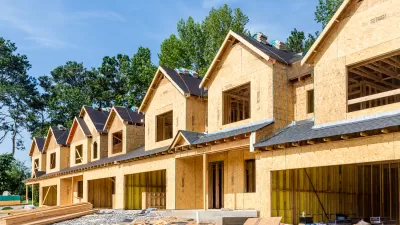The city of Sacramento, California, known as the City of Trees, is nearing the finish line on a heavily debated ordinance to create new regulations for the management of trees.

"In the City of Trees, a new ordinance might put more bite in protecting our bark," reports the clever opening of an article by Anita Chabria and Adam Ashton.
The Sacramento City Council recently approved a controversial ordinance that would establish new regulations for "safeguarding, maintaining and removing trees on both public and private land."
"Backers of the new ordinance say it will add protections for about 25,000 trees now excluded from city purview and create a long-term plan for preserving the leafy canopy of 100,000 trees viewed as a defining characteristic of the city," according to Chabria and Ashton.
The ordinance has its opponents, however, and the city had yet to achieve a consensus on the ordinance, days ahead of an expected vote by the City Council. Critics of the plan say it doesn’t go far enough to protect the city's trees.
Among many details reported in the article, Chabria and Ashton note that "the ordinance calls for the city to create a tree master plan to address policy issues such as canopy protections and ways to diversify tree species with ones more suited to the environment." A separate article by Cathy Locke reported the results of the City Council's vote.
Hat tip to Jen Kinney for sharing the news of Sacramento's tree ordinance.
FULL STORY: New tree ordinance could give Sacramento’s urban forest closer scrutiny

Pennsylvania Mall Conversion Bill Passes House
If passed, the bill would promote the adaptive reuse of defunct commercial buildings.

Planning for Accessibility: Proximity is More Important than Mobility
Accessibility-based planning minimizes the distance that people must travel to reach desired services and activities. Measured this way, increased density can provide more total benefits than increased speeds.

Fair Housing Cannot Take a Back Seat to ‘Build, Baby, Build’
If we overlook fair housing principles in the plan to build US housing back better, we risk ending up right back where we started.

LA Metro Board Approves New 710 Freeway Plan
The newest plan for the 710 corridor claims it will not displace any residents.

Austin’s Proposed EV Charging Rules Regulate Station Locations, Size
City planners say the new rules would ensure an efficient distribution of charging infrastructure across the city and prevent an overconcentration in residential areas.

Making California State Parks More Climate-Resilient
A recently released report offers recommendations for keeping state parks healthy and robust, including acquiring additional land for conservation and recreation.
City of Costa Mesa
Licking County
Barrett Planning Group LLC
HUD's Office of Policy Development and Research
Mpact Transit + Community
HUD's Office of Policy Development and Research
Tufts University, Department of Urban and Environmental Policy & Planning
City of Universal City TX
ULI Northwest Arkansas
Urban Design for Planners 1: Software Tools
This six-course series explores essential urban design concepts using open source software and equips planners with the tools they need to participate fully in the urban design process.
Planning for Universal Design
Learn the tools for implementing Universal Design in planning regulations.


























